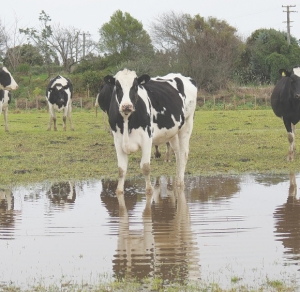Wet conditions stress cattle and tend to increase microorganisms in the environment, so herd managers can expect more animal health problems then.
Dealing with large numbers of cows with health problems is time consuming and can be overwhelming. But most animal health problems that arise during wet conditions can be manageable if recognised early and addressed quickly.
Wet conditions lead to stresses which can reduce cattle’s resistance to disease, such as changes to feeding practices, disrupted milking routines and exposure to wet and mud. And the challenge from disease-causing microorganisms and parasites increases.
In many instances the animals can cope, although in severe circumstances, changes to their routine, management and environment can lift disease levels. This particularly applies to, for example, young stock, calving cows and those in early lactation.
“And farm labour is often stretched at these times so the options for housing and caring for sick cows is limited. Measures to prevent disease are a high priority for staff.”
Mastitis and lameness pose the most immediate health risks. And there are other stressors and environment related diseases more prevalent in the wet, affecting people, livestock, the environment and milk quality.
To manage the risks:
Ensure staff are trained and facilities are adequate for handling stock safely
Practice good hygiene after handling animals
Consider the biosecurity implications before moving stock (and feed) on, off and around a farm
Make provisions for disposal of dead stock to limit disease and environmental contamination
Record the details of all treatments, including the cow ID and applicable withholding periods
Use weather/mud-proof methods to identify treated cattle, i.e. tail tape may be better than stock paint
Seek vendor declarations when buying in feed, seeking information about growing and storage conditions. Also seek information on previous chemical treatments.
















